X-linked genes and risk of orofacial clefts: evidence from two population-based studies in Scandinavia
- PMID: 22723972
- PMCID: PMC3378529
- DOI: 10.1371/journal.pone.0039240
X-linked genes and risk of orofacial clefts: evidence from two population-based studies in Scandinavia
Abstract
Background: Orofacial clefts are common birth defects of complex etiology, with an excess of males among babies with cleft lip and palate, and an excess of females among those with cleft palate only. Although genes on the X chromosome have been implicated in clefting, there has been no association analysis of X-linked markers.
Methodology/principal findings: We added new functionalities in the HAPLIN statistical software to enable association analysis of X-linked markers and an exploration of various causal scenarios relevant to orofacial clefts. Genotypes for 48 SNPs in 18 candidate genes on the X chromosome were analyzed in two population-based samples from Scandinavia (562 Norwegian and 235 Danish case-parent triads). For haplotype analysis, we used a sliding-window approach and assessed isolated cleft lip with or without cleft palate (iCL/P) separately from isolated cleft palate only (iCPO). We tested three statistical models in HAPLIN, allowing for: i) the same relative risk in males and females, ii) sex-specific relative risks, and iii) X-inactivation in females. We found weak but consistent associations with the oral-facial-digital syndrome 1 (OFD1) gene (formerly known as CXORF5) in the Danish iCL/P samples across all models, but not in the Norwegian iCL/P samples. In sex-specific analyses, the association with OFD1 was in male cases only. No analyses showed associations with iCPO in either the Norwegian or the Danish sample.
Conclusions: The association of OFD1 with iCL/P is plausible given the biological relevance of this gene. However, the lack of replication in the Norwegian samples highlights the need to verify these preliminary findings in other large datasets. More generally, the novel analytic methods presented here are widely applicable to investigations of the role of X-linked genes in complex traits.
Conflict of interest statement
Figures
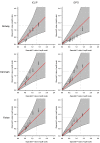
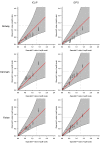
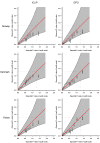
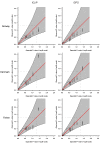
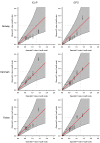
Similar articles
-
Genetic determinants of facial clefting: analysis of 357 candidate genes using two national cleft studies from Scandinavia.PLoS One. 2009;4(4):e5385. doi: 10.1371/journal.pone.0005385. Epub 2009 Apr 29. PLoS One. 2009. PMID: 19401770 Free PMC article.
-
A new approach to chromosome-wide analysis of X-linked markers identifies new associations in Asian and European case-parent triads of orofacial clefts.PLoS One. 2017 Sep 6;12(9):e0183772. doi: 10.1371/journal.pone.0183772. eCollection 2017. PLoS One. 2017. PMID: 28877219 Free PMC article.
-
Maternal genes and facial clefts in offspring: a comprehensive search for genetic associations in two population-based cleft studies from Scandinavia.PLoS One. 2010 Jul 9;5(7):e11493. doi: 10.1371/journal.pone.0011493. PLoS One. 2010. PMID: 20634891 Free PMC article.
-
Cleft-twin sets in Finland 1948-1987.Cleft Palate Craniofac J. 1996 Jul;33(4):340-7. doi: 10.1597/1545-1569_1996_033_0340_ctsif_2.3.co_2. Cleft Palate Craniofac J. 1996. PMID: 8827393 Review.
-
Orofacial Clefts: Genetics of Cleft Lip and Palate.Genes (Basel). 2023 Aug 9;14(8):1603. doi: 10.3390/genes14081603. Genes (Basel). 2023. PMID: 37628654 Free PMC article. Review.
Cited by
-
A Genome-Wide Search for Gene-Environment Effects in Isolated Cleft Lip with or without Cleft Palate Triads Points to an Interaction between Maternal Periconceptional Vitamin Use and Variants in ESRRG.Front Genet. 2018 Feb 26;9:60. doi: 10.3389/fgene.2018.00060. eCollection 2018. Front Genet. 2018. PMID: 29535761 Free PMC article.
-
Parent-of-origin-environment interactions in case-parent triads with or without independent controls.Ann Hum Genet. 2018 Mar;82(2):60-73. doi: 10.1111/ahg.12224. Epub 2017 Nov 2. Ann Hum Genet. 2018. PMID: 29094765 Free PMC article.
-
Non-syndromic Cleft Palate: An Overview on Human Genetic and Environmental Risk Factors.Front Cell Dev Biol. 2020 Oct 20;8:592271. doi: 10.3389/fcell.2020.592271. eCollection 2020. Front Cell Dev Biol. 2020. PMID: 33195260 Free PMC article. Review.
-
Genome-wide interaction studies identify sex-specific risk alleles for nonsyndromic orofacial clefts.Genet Epidemiol. 2018 Oct;42(7):664-672. doi: 10.1002/gepi.22158. Epub 2018 Sep 11. Genet Epidemiol. 2018. PMID: 30277614 Free PMC article.
-
Genome-wide Gene-by-Sex Interaction Studies Identify Novel Nonsyndromic Orofacial Clefts Risk Locus.J Dent Res. 2022 Apr;101(4):465-472. doi: 10.1177/00220345211046614. Epub 2021 Oct 23. J Dent Res. 2022. PMID: 34689653 Free PMC article.
References
-
- Strauss RP. The organization and delivery of craniofacial health services: the state of the art. Cleft Palate Craniofac J. 1999;36:189–195. - PubMed
Publication types
MeSH terms
Grants and funding
LinkOut - more resources
Full Text Sources
Medical

